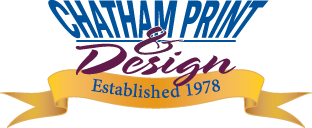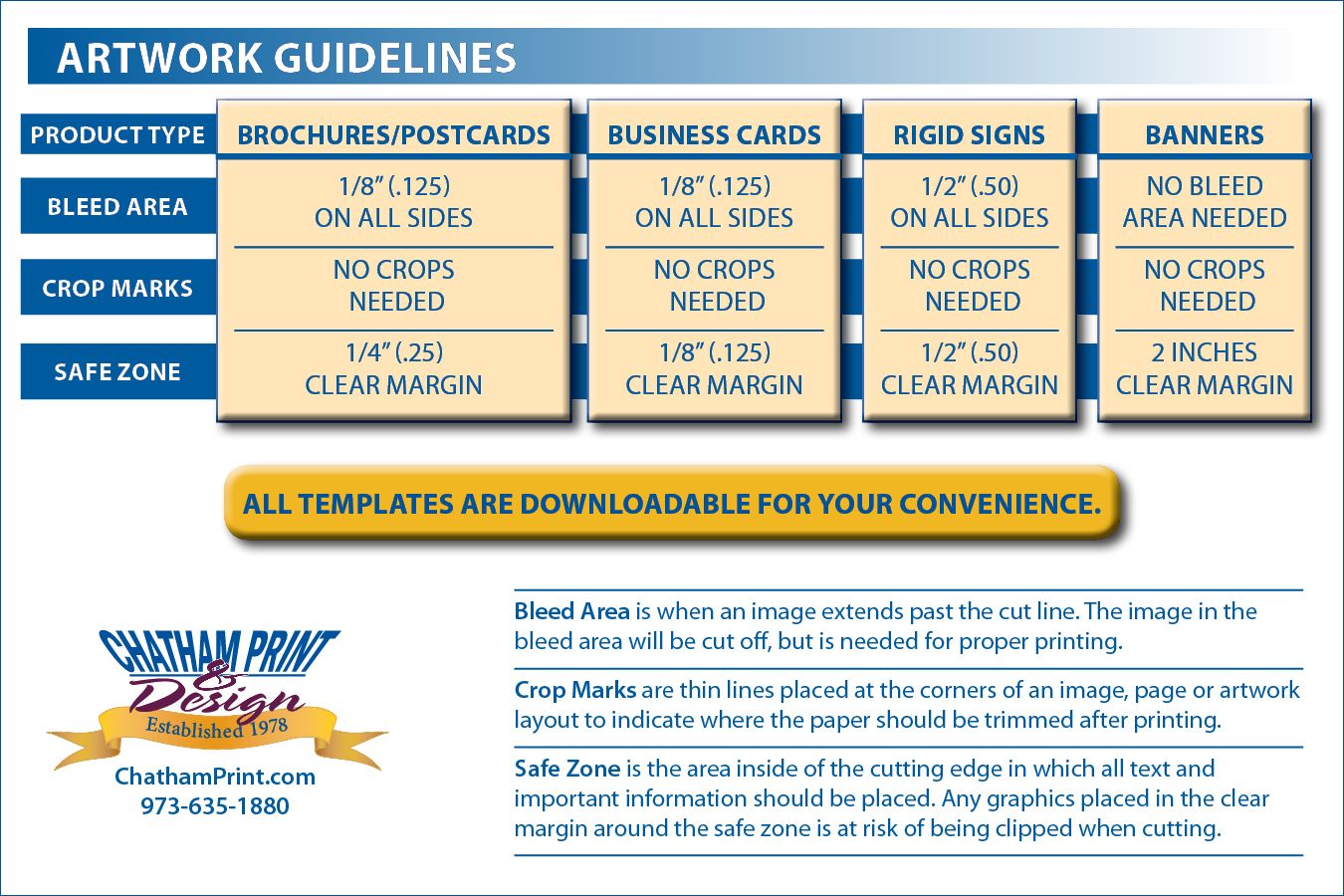
Here you'll find answers to common questions our clients ask. Start by selecting one of the links below. If you don’t see what you need – call or contact us online.
- At what resolution, color and format should I save my photos and graphics?
- Why do the printed colors look different from the colors on my screen?
- How do I go about getting an estimate from you?
- How long does it take for you to complete my order?
- What file format should I use when submitting my electronic document for printing?
- Tips on file format setups
- How can I eliminate paper jams and curls on my forms?
- Is white considered a printing color?
- Tips on how to save your design files
- What kind of work does our company do?
- What forms of payment do you accept?
- What is a "proof"?
- What is the Pantone Matching System?
- What do I need to provide for variable data projects?
- What does personalization mean?
- What is coated paper stock?
- What is variable data printing?
- How Do I setup my file?
-
At what resolution, color and format should I save my photos and graphics?
For printing orders, resolution should be set to 300 dpi, color to CMYK or Pantone inks, and format to .tiff or .eps.
For website graphics, resolution should be set to 72dpi, color to RGB, and format to .png or .jpg format.
Web and print pictures cannot be used interchangeably, therefore graphics taken from the web usually do not print well. They appear pixelated and blocky.
-
Why do the printed colors look different from the colors on my screen?
In short, printers and monitors produce colors in different ways.
Monitors use the RGB (red, green, blue) color model, which usually supports a wider spectrum of colors. Printers use the CMYK (cyan, magenta, yellow, black) color model, which can reproduce most—but not all—of the colors in the RGB color model. Depending on the equipment used, CMYK generally matches 85–90% of the colors in the RGB model.
When a color is selected from the RGB model that is out of the range of the CMYK model, the application chooses what it thinks is the closest color that will match. Programs like Adobe Photoshop will allow you to choose which color will be replaced. Others may not.
Pantone inks bring another color spectrum into the mix. Pantone colors include many colors that cannot be created with CMYK or RGB.
-
Since you are already on our website, we suggest you use our online estimate request form. Otherwise, the best way to ensure that we get all the information necessary to do an accurate quote is to give us a call and talk with one of our customer service representatives. If possible, create a PDF of your file and send it to us so we can see exactly what it is you are producing.
-
How long does it take for you to complete my order?
This depends on the type of project you are submitting and at what stage we are receiving the work. If you are providing print-ready files, you will save the time it would take to create the digital file for your order. If we are starting from scratch, please allow time for design, proofing and possibly changes to the design. Please contact us and we will look at the current schedule in production and give you a time frame for your job.
-
What file format should I use when submitting my electronic document for printing?
PDF (Portable Document Format) is the most common and preferred file format for submitting digital documents. With the installation of a PDF print driver on your computer, virtually any program can generate a PDF file suitable for printing. Both commercial and free PDF print drivers are available online for download from different sources.
-
Tips on file format setups
Many layout programs have collection or packaging functions that will automatically collect your document, fonts, and art, including a report. When possible, it is recommended to use these functions, because without any or all of these elements we will be unable to print your postcard.
• Enclose all screen fonts and printer fonts
• Include all placed images
• Make sure your files are set with proper bleed, trim and safety areas.BLEED: All art trimming off the edge MUST be pulled out 1/8” beyond the trim line
TRIM: This is the guideline where the card will be cut
SAFETY: All art and text within this safety area will assure that nothing will be trimmed off during the cutting process. A 1/4” guide in from the trim should work fine.
-
How can I eliminate paper jams and curls on my forms?
It is important to store your laser forms in a humidity-controlled environment when possible. Store your forms in the same room as your laser printer at least 24 hours before printing. This acclimates the stock and keeps it running well.
-
Is white considered a printing color?
Not typically. Because white is the default color of paper, it is simply recognized as the absence of any ink.
When using colored paper however, white ink may be used if any text or graphic requires it. For dark color papers, we recommend printing in metallic inks like silver and gold.
Another technique is to print all the background color and leave the text open, letting white paper show through. This is called a full reverse and may or may not work on any specific project. It is best to show us your design to determine the best method.
-
Tips on how to save your design files
Make them print ready and acceptable for us to print.
INDESIGN:
Saving your InDesign file as a PDF
• Embed all Images
• Convert all your text/copy to outline fonts
• Export your file as a PDF using CMYK setting if full color printing, or no change if spot color printingPUBLISHER:
Under File, Print, select Adobe PDF
Under Properties select Press Quality and Save your PDF -
What kind of work does our company do?
Design Services - We utilize the latest design technology available in order to offer a full range of design services. If you need a brochure produced, we can work from the files you provide on disk, or design your brochure from scratch.
Copy Services - Our high-speed duplicators, both color and black, produce copies efficiently and economically whether you provide hard copy or bring in digital files on disk. Our state-of-the-art production duplicating equipment allows us to deliver work quickly and efficiently.
Printing Services - From one-color to full-color printing, our company has the capability to meet your needs. From short run to long run, we can offer a solution that will be just right for you.
Finishing Services - We can cut, perforate, score, number, fold, collate, saddle stitch, bind, and just about any other bindery process you could ever need.
Mailing Services - We can work with your mailing list or arrange to purchase a list, merge your information and mail your piece at the appropriate postal method for your time and budget.
-
What forms of payment do you accept?
We accept cash, company check and all major credit cards.
We can set up a business charge account for you where you will receive a monthly statement. Contact us for details.
-
What is a "proof"?
A proof is a way of ensuring that we have set your type accurately and that everything is positioned according to your requirements. Typically, we will produce a proof which will be sent to you online or printed on paper which can be viewed in our shop or delivered to you in person.
On multiple color jobs, we can produce a color proof on our color output device to show how the different colors will appear.
For Pantone ink jobs, our color proofer simulates the color of the ink but cannot create an exact match to the Pantone number. When we go to press, our press operator will refer to the Pantone swatch book and maintain the color standards created by Pantone, and not match the color proof. This way you can be assured you will get the Pantone number requested.
-
What is the Pantone Matching System?
The Pantone Matching System (PMS) is a color reproduction standard in which colors all across the spectrum are each identified by a unique, independent number. The use of PMS allows us to precisely match colors and maintain color consistency throughout the printing process.
-
What do I need to provide for variable data projects?
We work with many types of data files, but CSV files are the safest bet. These are data files that have commas separating each field, and returns separating each line of data. To save time and hassle, make sure your data is properly formatted with each piece of data in separate fields.
Complex projects may require other files, like image files or additional data files. If you are unsure of what may be required for a particular variable project, give us a call for a free consultation.
-
What does personalization mean?
Personalization is another term for variable data—technology for printing documents so that each piece is personalized to the specific recipient.
Personalizing can be as simple as a unique name and address on every printed piece. But more sophisticated levels of personalization can include text or images that vary based on data specific to the recipient, or data-driven graphics such as a pie chart illustrating something specific to the recipient.
-
What is coated paper stock?
Coated paper stock is a premium, high-quality paper that has been given a smooth finish, either glossy or dull, designed specifically for documents that require sharp details and vivid colors. Uncoated paper, by contrast, is porous and best suited to the printing of black and white text documents.
-
What is variable data printing?
Variable data printing is technology for printing documents so that each piece is personalized to the specific recipient. At the most basic level, this means personalizing a name and address. But for real impact, many projects include unique graphics and content that speaks directly to the recipient.
-
Artwork guidelines will help to submit files correctly. Click link to see the safe zone, the cut line and the bleed area to use on your projects.

